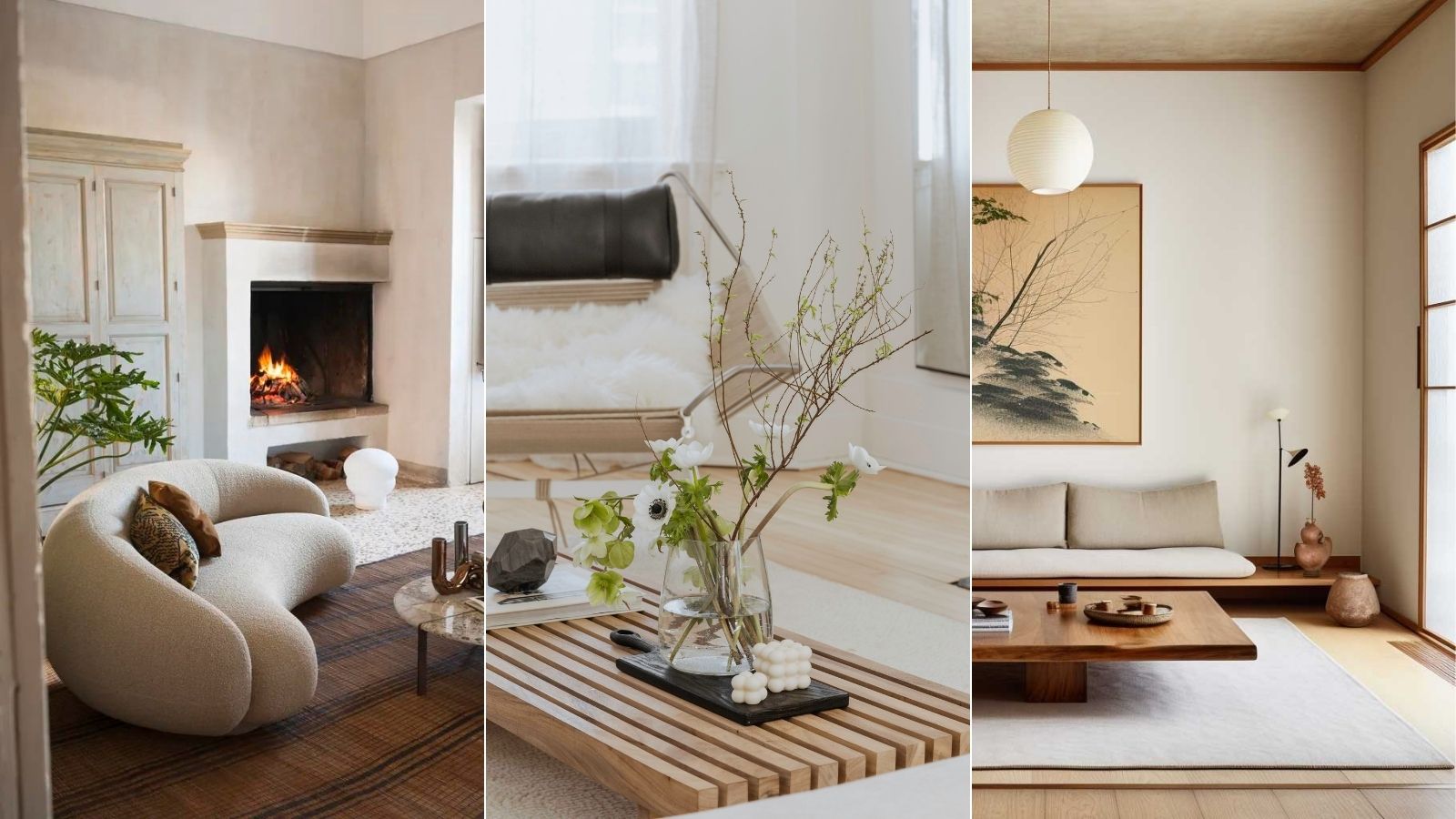In recent years, interior design trends have embraced simplicity, mindfulness, and functionality. One of the most captivating and fast-growing styles that embody these principles is Japandi — a seamless blend of Japanese elegance and Scandinavian coziness. It offers the best of both worlds: the clean lines and minimalism of Japanese design combined with the warmth and comfort of Scandinavian interiors. Here’s everything you need to know about this trend and how to apply it to your own space.
What Is Japandi Style?
Japandi is a hybrid interior design style that merges Japanese aesthetics with Scandinavian functionality. At its core, it promotes intentional living, focusing on minimalism, craftsmanship, sustainability, and comfort.
Japanese design emphasizes clean lines, muted color palettes, and the philosophy of “wabi-sabi,” which finds beauty in imperfection and simplicity. Meanwhile, Scandinavian design, known for its “hygge” philosophy, prioritizes warmth, coziness, and practical living.
When blended together, Japandi creates an atmosphere that is both calming and lived-in — minimal but never cold, functional yet deeply inviting.
The Core Principles of Japandi Design
To embrace Japandi style, it’s essential to understand its guiding principles:
1. Minimalism with Warmth
Japandi spaces are clutter-free and minimal, but unlike stark minimalism, they also feel warm and lived-in. The goal is to eliminate excess while still incorporating comfort and soul into the space.
2. Natural Materials
Both Japanese and Scandinavian styles emphasize the use of natural materials like wood, bamboo, rattan, linen, and clay. Japandi interiors often feature handcrafted elements and materials that show texture and age gracefully.
3. Functional Furniture
In Japandi design, every item has a purpose. Furniture should be sleek, low-profile, and practical — without unnecessary ornamentation. Quality over quantity is a key mantra.
4. Neutral, Earthy Colors
Japandi interiors often use a muted color palette that includes shades like beige, cream, charcoal, taupe, and earthy greens. These colors create a serene, grounded atmosphere.
5. Indoor-Outdoor Harmony
Nature plays a significant role in both Japanese and Scandinavian traditions. Incorporate plants, large windows, and natural light to reflect this connection to the outdoors.
How to Decorate Your Home in Japandi Style
Transforming your space into a Japandi haven doesn’t require a total overhaul. Here are practical tips to bring Japandi design into any room.
Start with a Neutral Foundation
Begin with neutral base colors for your walls, floors, and large furniture. Soft whites, warm grays, and earthy beiges provide a calming backdrop. Avoid harsh contrasts — everything should feel soft and harmonious.
Choose Quality Over Quantity
Japandi design is about intentional living, so choose fewer pieces that have strong design and functional value. Opt for furniture with clean lines, made from natural materials. Think of a low wooden bed, a simple oak dining table, or a minimalist linen sofa.
Use Textures to Add Depth
To prevent a neutral palette from feeling flat, incorporate a variety of textures — such as linen cushions, wool throws, handmade ceramics, or woven baskets. Texture is key to making minimalism feel warm rather than sterile.
Let Light Flow Freely
Japandi homes maximize natural light. Keep window treatments minimal — sheer curtains or natural fiber blinds work best. This openness creates a sense of spaciousness and connects the indoors with the outdoors.
Add Plants Sparingly
While greenery is welcome, avoid overfilling your space with plants. Choose a few sculptural or low-maintenance varieties, such as bonsai, snake plants, or peace lilies. This subtle greenery complements the natural materials in your design.
Keep Décor Simple and Meaningful
Décor in Japandi spaces should be carefully curated, not overdone. Choose art with calming tones or minimalist compositions. A handmade vase, a framed brushstroke painting, or a stack of books are more than enough to express personality.
Embrace Wabi-Sabi
Wabi-sabi is the Japanese philosophy of finding beauty in imperfection and transience. Incorporate aged wood, weathered pottery, or uneven handmade items that carry a story. These pieces bring character and authenticity to the room.
Balance Negative Space
Don’t be afraid of empty spaces — in Japandi, less is more. Open spaces let the design breathe and help you focus on what truly matters. Negative space is just as important as the objects in the room.
Japandi in Different Rooms
Here’s how you can adapt Japandi principles to specific areas of your home:
Living Room
Keep furniture low-profile and arrange seating to promote conversation. Choose a neutral sofa, a wooden coffee table, and a few cozy accents like soft throws and floor cushions. A large indoor plant in a ceramic pot adds a peaceful focal point.
Bedroom
The bedroom should be a sanctuary. Use a platform bed, linen bedding in calming colors, and bedside tables made from light wood. Keep accessories minimal — perhaps a single framed print or a small reading lamp.
Kitchen and Dining
Opt for natural wood cabinets or matte finishes. Keep counters clutter-free and display only beautiful essentials — a stone mortar and pestle, handmade mugs, or wooden utensils. In the dining area, use a sturdy wooden table paired with simple chairs.
Bathroom
Create a spa-like feel with neutral tiles, bamboo accessories, soft towels, and stone or wood elements. Keep the color scheme cohesive and introduce a plant or two for freshness.
Why Japandi Appeals to Modern Lifestyles
As more people seek to live mindfully and sustainably, Japandi offers a lifestyle that reflects these values. It’s not just a design trend — it’s a philosophy that encourages slower living, intentional choices, and inner calm.
The style also works well for both small apartments and large homes, offering flexibility and timeless appeal. It adapts to changing trends without losing its identity, making it a wise long-term design choice.
The Timeless Beauty of Japandi
Japandi style shows us that minimalism doesn’t have to be cold, and comfort doesn’t have to be cluttered. By blending the precision of Japanese design with the softness of Scandinavian aesthetics, you create a space that is harmonious, warm, and deeply personal.
